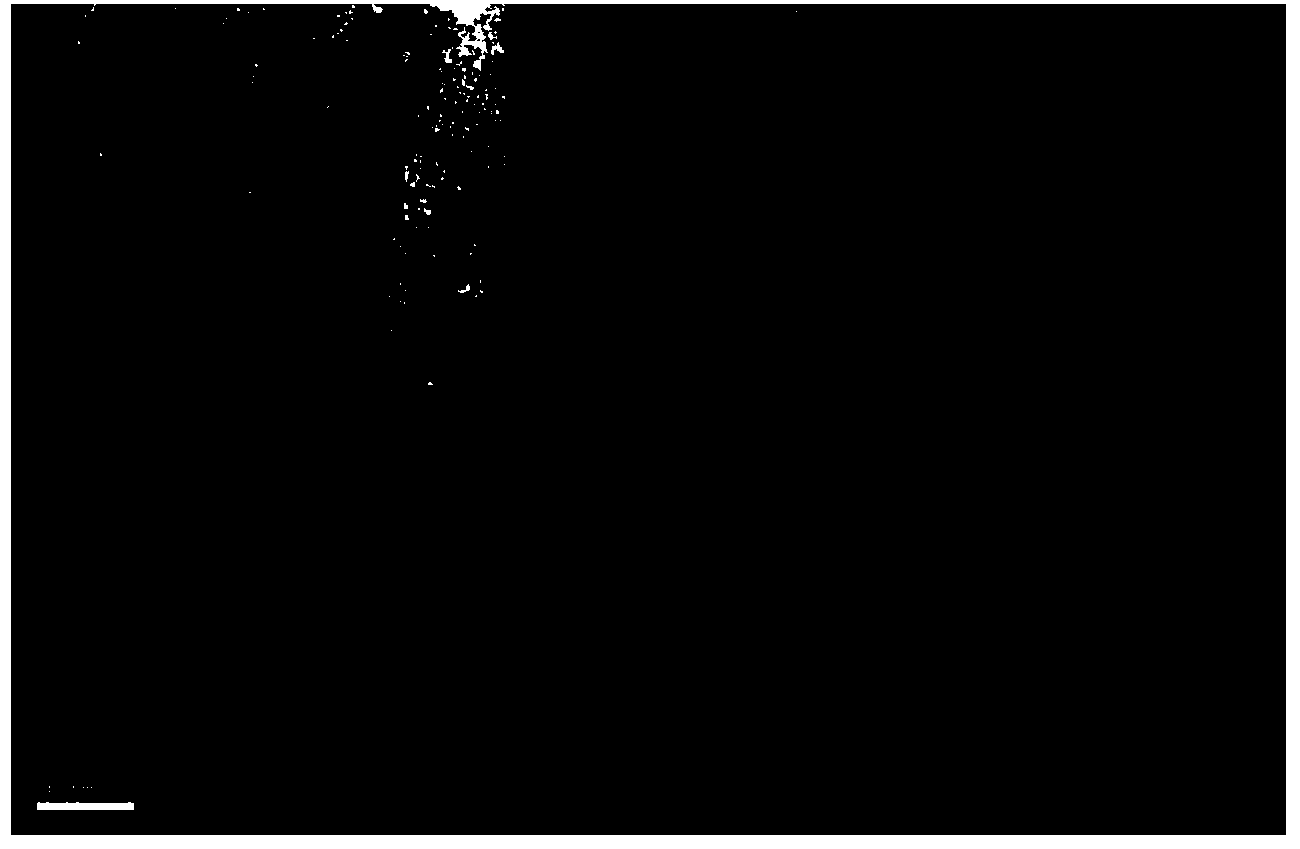Continuous unidirectional solidification preparation method of in-situ reaction of nano-particle copper- ferroalloy
A nanoparticle, in-situ generation technology, applied in nanotechnology and other directions, to achieve the effect of good mechanical properties
- Summary
- Abstract
- Description
- Claims
- Application Information
AI Technical Summary
Problems solved by technology
Method used
Image
Examples
Embodiment 1
[0021] The mass percentage of copper alloy composition in this experiment is (98%) Cu, (2%) Fe.
[0022] Step 1: After the raw materials are cleaned and removed, they are placed in a graphite crucible, and the vacuum induction furnace is evacuated to 10 -3 After Pa, set the temperature to 350°C, heat it to the set temperature, keep it warm for 20 minutes and dry it. After drying, evacuate the vacuum induction furnace to 10 -3 Pa discharges the gas;
[0023] Step 2: Vacuum the vacuum induction furnace to 10 -3 Pa and raise the temperature to 1225°C to heat and melt. After the metal raw material is completely melted, introduce high-purity argon, keep it warm for 30 minutes and turn on the cooling system;
[0024] Step 3: Adjust the cooling water volume to 900L / h, adjust the casting speed to 1.5mm / 10s, and then turn on the traction system. Observe the melt temperature during the casting process to ensure that the temperature is kept at 1250°C ± 5°C.
[0025] Step 4: The bill...
Embodiment 2
[0028] The mass percentage of copper alloy composition in this experiment is (99.5%) Cu, (0.5%) Fe.
[0029] Step 1: After the raw materials are cleaned and removed, they are placed in a graphite crucible, and the vacuum induction furnace is evacuated to 10 -3 After Pa, set the temperature to 350°C, heat it to the set temperature, keep it warm for 20 minutes and dry it. After drying, evacuate the vacuum induction furnace to 10 -3 Pa discharges the gas;
[0030] Step 2: Vacuum the vacuum induction furnace to 10 -3 Pa and raise the temperature to 1250°C to heat and melt. After the metal raw material is completely melted, introduce high-purity argon, keep it warm for 30 minutes and turn on the cooling system;
[0031] Step 3: Adjust the cooling water volume to 900L / h, adjust the casting speed to 3mm / 10s, and then turn on the traction system. Observe the melt temperature during the casting process to ensure that the temperature is kept at 1250°C ± 5°C.
[0032] Step 4: The bi...
Embodiment 3
[0034] The mass percentage of copper alloy composition in this experiment is (99%) Cu, (1%) Fe.
[0035] Step 1: After cleaning and removing impurities, the raw materials are placed in a graphite crucible. After the vacuum induction furnace is evacuated to 0.001Pa, the temperature is set at 350°C, heated to the set temperature, and then kept for 20 minutes for drying. After drying, evacuate the vacuum induction furnace to 0.001Pa again to discharge the gas;
[0036] Step 2: Vacuumize the vacuum induction furnace to 0.001Pa and raise the temperature to 1200°C to heat and melt. After the metal raw material is completely melted, introduce high-purity argon, keep it warm for 30 minutes and turn on the cooling system;
[0037] Step 3: Adjust the cooling water volume to 900L / h, adjust the casting speed to 2.5mm / 10s, and then turn on the traction system. Observe the melt temperature during the casting process to ensure that the temperature is kept at 1300°C ± 5°C.
[0038] Step 4: ...
PUM
| Property | Measurement | Unit |
|---|---|---|
| tensile strength | aaaaa | aaaaa |
| tensile strength | aaaaa | aaaaa |
| tensile strength | aaaaa | aaaaa |
Abstract
Description
Claims
Application Information
 Login to View More
Login to View More - R&D
- Intellectual Property
- Life Sciences
- Materials
- Tech Scout
- Unparalleled Data Quality
- Higher Quality Content
- 60% Fewer Hallucinations
Browse by: Latest US Patents, China's latest patents, Technical Efficacy Thesaurus, Application Domain, Technology Topic, Popular Technical Reports.
© 2025 PatSnap. All rights reserved.Legal|Privacy policy|Modern Slavery Act Transparency Statement|Sitemap|About US| Contact US: help@patsnap.com


